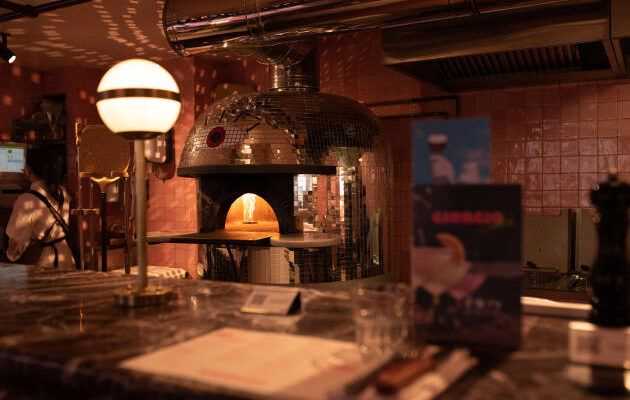InvestigationWith its “sidewalks” as inflated with helium, the Neapolitan stands out from all other pizzas. And is making a spectacular comeback, the new generation of French pizzaioli swearing by it.
Is it a cushion? Is it an airbag? The sidewalks of the pizza on the green marble table seem to be inflated with helium. And the garnish (fleshy San Marzano tomato, anchovies from Cetara, a region of Campania, Taggiasche olives, typical of Liguria), is found tightly framed, in the center, by the aerial crumb. At the Daroco restaurant, which in five years has become an institution of Italian cuisine in Paris, the Neapolitan contract is fully respected with this pizza with wide honeycomb edges punctuated with delicious ingredients imported from the boot.
Antonio Prisco, specialist in transalpine gastronomy (and author of the Umast.fr site), breathes a sigh of relief in front of this green, white and red masterpiece, under the high ceiling covered with mirrors of the restaurant. “When I arrived in France twenty years ago, the pizzas were good to throw in the trash. I even remember that some cooks covered them with grated Gruyère cheese, which goes beyond sacrilege. But today, it’s over. There has been an incredible qualitative leap. This dough is soft, crisp, like in Naples, which is not at all obvious from a technical point of view. “
According to a study carried out by the firm Gira Conseil, 1.1 billion pizzas were sold in France in 2018, or 10 kilos of pretty rounds per person. But the Italian specialty reigns everywhere in the world, in an almost infinite number of variations: “Chicago” pizza in the United States (thick crust, cooked like a pie), Quebec pizza-ghetti (a pizza cut in half embellished with a portion of spaghetti), Scottish gluttony (whose dough is fried), dubious Swedish eccentricities (kebab, kiwi, banana)… But after a period of change, the authentic Neapolitan is making a spectacular comeback.
“This corresponds to a return to origins, because pizza was born in Naples, recalls the food historian Pierre Leclercq. From the XVIe century, in the city, the term designates a bit of everything: cheese pie, puff pastry in the shape of sausage or foccacia. It is this last form which will prevail in the XVIIe, flavored with lard, cheese and basil, and offered to customers who cannot afford to cook at home. It will be enriched with tomato sauce a century later. “
Italian stone and flour oven
Today, the new generation of French pizzaioli swears by the Neapolitan. Like Marion Bohe, 36, patron saint of Maria, an establishment which sits on the slopes of the Croix-Rousse, in Lyon. It is there, in a former 17th century convente century, that two years ago she installed the large turquoise blue earthenware dome of her pizza oven in the center of the room. “Strangely, I discovered Neapolitan pizza in Brooklyn, she recalls. It combined everything I like: few products, but of quality, a delicacy that folds, that is eaten without fuss, and that is inexpensive. ”
You have 62.9% of this article to read. The rest is for subscribers only.
